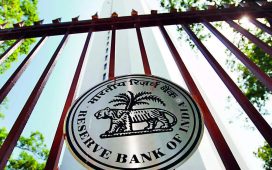Interview questions can sometimes be downright bizarre, but there’s often a method to the madness. Companies like Facebook, Google, and Apple use these unconventional questions to delve deeper into a candidate’s thought processes, creativity, and personality.
James Dooley from Searcharoo has explained 15 of the strangest interview questions companies have actually asked, along with the rationale behind them. James also provides tips on how to approach them effectively.
The Strangest Questions
Cisco: “If you were a tree, what kind of tree would you be and why?”
Choose a tree that represents your qualities and values, as the question aims to assess your personality and self-perception.
Explain your choice with attributes that align with the role you’re applying for.
Facebook: “25 racehorses, no stopwatch. 5 tracks. Figure out the top three fastest horses in the fewest number of races.”
The question evaluates your mathematical ability. To answer this question, break down the problem into smaller, manageable parts. Consider grouping the horses and conducting elimination races to find the top contenders efficiently.
Google: “How many basketballs would fit in this room?”
As this evaluates your estimation skills and logical reasoning, you should think about the volume of the room and the size of a basketball. Provide a structured estimation process rather than a random guess.
Blizzard Entertainment: “If you could have dinner with any three people (dead or alive), who would they be?”
The question reveals your personal interests and values. Choose then individuals who have inspired you or whose work aligns with your career and personal values. Explain the significance of each choice.
Bed Bath & Beyond: “If you were a box of cereal, what would you be and why?”
This question gauges your creativity and personality fit. You should therefore pick a cereal that resonates with your personality and strengths. Be creative in linking your choice to your professional traits.
Goldman Sachs: “How would you explain a database in three sentences to your eight-year-old nephew?”
This tests your ability to simplify complex concepts. Therefore, you should use simple language and relatable analogies. Focus on clarity and comprehension.
American Heart Association: “What’s the color of money?”
How you pay attention to detail and cultural knowledge is central to this question. But this answer may vary by country. In the U.S., for example, money is predominantly green.
Microsoft: “If you had a choice between two superpowers, being invisible or flying, which would you choose?”
This reveals one’s personality traits and decision-making process. Reflect on the implications of each superpower and choose one that aligns with your values and professional strengths.
Intel: “How would you design a spice rack for the blind?”
This sounds like a trick question, but fear not. Think of the question as nothing but something that will evaluate your problem-solving and empathy skills.
Consider the needs and challenges faced by visually impaired individuals. Focus on practical and inclusive design solutions.
Apple: “If you were a pizza deliveryman, how would you benefit from scissors?”
This evaluates creativity and out-of-the-box thinking. Think creatively about practical uses for scissors in the context of pizza delivery, such as cutting pizza boxes or coupons.
Microsoft: “How would you test an elevator?”
This question evaluates your analytical and problem-solving skills. Discuss different testing methods, including safety, functionality, and user experience. Think about various scenarios and edge cases.
Dell: “Describe the internet to someone who just woke up from a 30-year coma.”
This question sounds daunting, but it basically tests your communication skills and ability to explain complex concepts.
The key here is to use simple, everyday language. Draw comparisons to concepts that existed 30 years ago to create understanding.
Zappos: “If you could be any animal in the world, what animal would you be and why?”
Select an animal that reflects your personality and strengths, as this assesses your cultural fit and creativity. Relate your choice to qualities relevant to the job.
Bank of America: “What’s the angle between the hour and minute hand at 3:15?”
The question merely tests your logical and mathematical reasoning. Break down the problem into steps, considering the positions of the clock hands. Calculate the angle with precision.
Google: “How many cows are in Canada?”
Don’t panic with this question. It just assesses your estimation skills and logical reasoning. Use logical steps to estimate, such as considering the number of farms and average herd sizes. Show your reasoning process clearly.
Tips for Answering Unconventional Questions
James offers tips when you encounter unconventional, if not bizarre, questions in a job interview.
-
Stay calm: Don’t panic when faced with an unusual question. It’s often more about your thought process than the exact answer.
-
Think aloud: Verbalize your thought process to show how you approach problems.
-
Be creative: Use your imagination and don’t be afraid to think outside the box.
-
Relate to the job: Wherever possible, connect your answer to qualities and skills relevant to the position you’re applying for.
-
Be honest: Give genuine answers that reflect your true personality and values.
James explains, “These unconventional questions actually help the interviewers understand how the candidates think on their feet and look at unexpected challenges. It’s really less about getting the ‘right’ answer and more about revealing the candidate’s analytical and creative process.”











